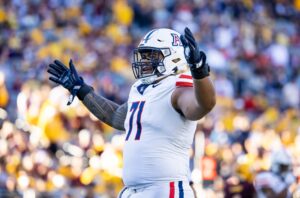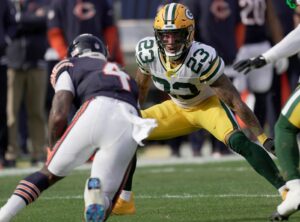Last year, the Huffington Post wrote, “The NFL has a Quarterback Concussion Problem.” They were right. Quarterbacks were returning to games even after showing all of the signs of a concussion. Not only is this a danger to players and teams, but the league’s reputation.
Recently, the Supreme Court declined to review a $1 billion dollar concussion settlement against the NFL. The class-action lawsuit filed in Philadelphia in June of 2012, accused the NFL of hiding what it knew about the link between concussions and chronic traumatic encephalopathy, the degenerative brain disease that has been found in dozens of former players after their deaths.
Many other conditions, including Alzheimer’s disease, impact related dementia, amyotrophic lateral sclerosis (more commonly known as ALS or Lou Gehrig‘s disease) or Parkinson’s disease are included in the suit, and NFL players who have been diagnosed are eligible for payments from the specifically-designated league fund for a term of the next 65 years.
NFL Concussion Protocol. Is it working?
This season, the NFL instituted new rules that would fine teams and even cause them to lose draft picks if they failed to follow the concussion policy. It seemed like they were trying to follow the advice coaches from youth football hear all the time: “when in doubt, leave him out.”
However, is it working? The tension has always been between the need to run spectacular plays to get and keep fan’s attention and the desire to protect players. Because football is a game of passion, players push themselves to play through injuries, including concussions. Is the NFL concussion protocol enough?
Number of Concussions Diagnosed
The number of concussions diagnosed is on the rise in the NFL, but most likely this is due to stricter penalties for violating the NFL concussion protocol and the current spotlight on head injuries. In the 2015 season, there were 271 concussions diagnosed, up 31% from the previous year.
Numbers aren’t up just in the pros. In middle and high school sports, concussion numbers are on the rise as well. Over a million concussions occur nationwide in high school football, and a third of those occur during practice.
Of course, that is assuming they are reported. Only 42% of schools have access to athletic trainers, and coaches and players alike may be hesitant to report injuries, especially if it means the player will have to sit out a crucial game.
Awareness and education are essential at any level, and parents and coaches should be aware of concussion symptoms and consequences. It appears, though, that even when aware of both of these things, players continue to play and coaches continue to let them.
Take the Matt Moore hit in the Miami Dolphins vs. Pittsburg Steelers matchup when the Dolphin’s quarterback missed only a single snap before reentering the game. Although the NFL now lets players go through the concussion assessment using a tablet, saving precious time, it should still take 8-12 minutes to complete. Moore was certainly not gone that long, and the league is reviewing the incident.
It’s an example of how the idea that third-string quarterback T.J. Yates would have had to come in and finish the game for the trailing Dolphins was perhaps enough to motivate medical personnel to bend the rules.
Coaching vs. Athlete Health
It comes down to the fact that coaches don’t want to sit athletes down who don’t want to sit. They don’t want to compromise a game, especially one in the playoffs by making a player go through an evaluation who tells the coach “I’m good to go.”
It’s not just about coaches keeping star players in the game either. It’s about the types of plays they call and the kind of offense they run.
We might think that a hard-hitting run offense would be the one with the most concussions, but it turns out that just isn’t the case. Masaru Teramoto, the lead researcher in a study that appeared in Orthopedic Journal of Sports Medicine, had set out to see if there was a difference in the way players performed before and after they returned from concussions. Instead, he found that there was a statistically significant relationship between a team’s style of play and the number of head injuries the team reported.
“In the NFL, players most involved in pass plays appear to be at increased risk for concussions,” the study found. Beyond that, the type of pass plays called also plays a role. Short passes and crossing patterns put both defensive and offensive players at the highest risk.
Defenders that play in zone defenses also are at greater risk. The playbook allows them to sit back and watch the play develop, then build up speed as they run to where the ball is. This is backed up by the research of Charles W. Scouten, Ph.D and his research on neurotrauma from Impact in animal subjects. “It’s not about force,” he explains. “That is the wrong question. It is more about velocity and momentum.”
All of this makes for more spectacular numbers and more exciting games. As the pros become more pass focused so do colleges, high schools, and even middle schools. Players at all levels are at higher risk for concussions because of play calling, while at the same time we try to protect them with new protocols, awareness, and better equipment.
Positions at Risk
Just like the type of offense breeds risk, so does the position a player plays. Corresponding with the data that players involved in pass plays are at the highest risk for concussions, we see this play out on both sides of the ball, but with the caveat that a cornerback is 42% more likely to get a concussion as a wide receiver.
Linebackers rank equally with the receivers, while safeties have less risk. Tight ends and offensive tackles have 33% higher risk of a concussion than defensive ends, and offensive linemen are only fractionally more likely to receive a head injury than defensive linemen.
The Fault is in Our Fans?
Many things are not what they seem, and we have been inundated with fake news, but we still have an astounding amount of trust in the NFL. “When in doubt, leave them out” should be the concussion motto, and the case of Matt Moore only proves the point. CBS analyst Phil Simms stated from the broadcast booth, “They would not let him back in the game if there was any doubt.”
That hasn’t been our experience as fans, though, and while we want our favorite players to be safe, we like it when they power through injuries, and most of all when our team wins. If a coach benches a player as a precaution, we slaughter him with Monday morning quarterbacking. It works the same way if a coach lets a player continue to play, and their injury gets worse.
Coaches call big pass plays because it keeps them employed, and makes them seem like heroes in the eyes of fans, team owners, other coaches, and even players.
So is it Working?
What does all of this mean to the future of football? How much stricter can we make concussion protocols and the fines and penalties for violating them? How safe can we make what is inherently a dangerous game?
The numbers say more concussions are being diagnosed and treated. Players are more aware, and the outcry after Carolina Panthers linebacker Luke Kuechly’s latest concussion that he should perhaps consider retirement is a discussion that probably would not have taken place at all a decade ago.
Sports media has to be responsible about how we report incidents and the opinions we offer as well. Sports journalism is unique, different than other media reporting: there is passion involved, and it is a lot harder to be objective when a team, player, and overall a game we love is involved. Phil Simms is just one example of a comment that was less than objective: instead of the observation we all made of “wow, that was a fast evaluation,” he expressed a faith in the league we all want to have, but one that is not always justified.
Football will always be a dangerous sport, and there is nothing we can do to change that. Through a better NFL concussion protocol and more strict enforcement of those protective measures, we can mitigate the danger to the long-term health of players.
The way coaches coach and players play will always depend in large part on the fans, and how we respond to that style. Are the concussion protocols working? Will they continue to do so?
Only time will tell.






